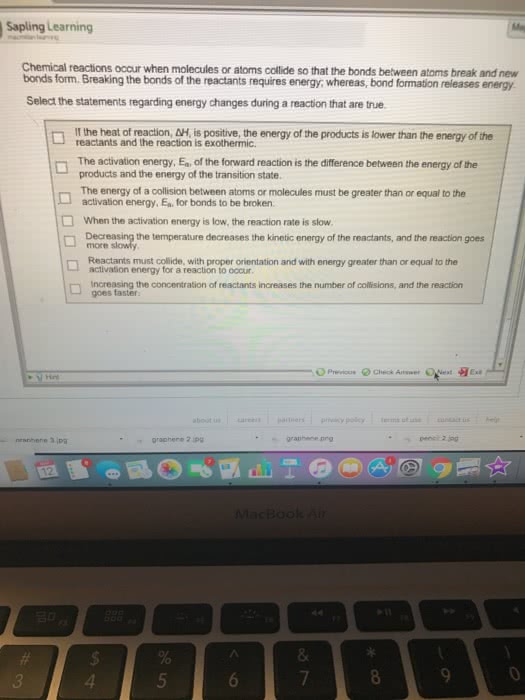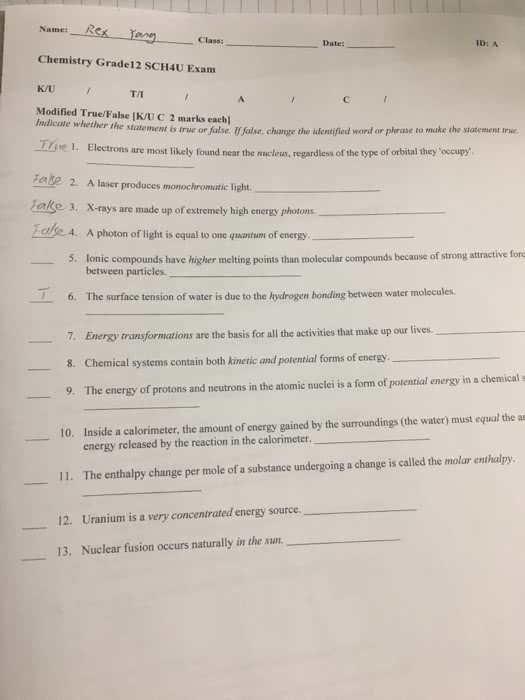01:160:161 Chapter Notes - Chapter 9.9-9.10: Degree Symbol, Chemical Bond
Document Summary
During a chemical reaction, the structure of the particles that compose matter changes. That structure change causes a potential energy change that results in an energy exchange with the surroundings. These bond energies correspond to the amount of energy necessary to break the particular chemical bond, but they also correspond to the amount of energy emitted when the bond is formed. Bond energies don"t give exact values for the change in enthalpy of a reaction because bond energies are average values obtained from measurements on many different molecules. A reaction is exothermic when weak bonds break and strong bonds form. A reaction is endothermic when strong bonds break and weak bonds form. Breaking a chemical bond always require energy. Delta h is the change in enthalpy for a chemical reaction- the difference in enthalpy between the products and reactants. Standard for enthalpy has three parts: the standard state.









